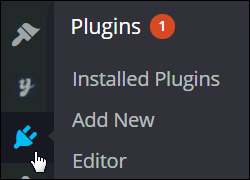 In another article, we explain what plugins are and how you can use these to easily add new features to your web site without touching code.
In another article, we explain what plugins are and how you can use these to easily add new features to your web site without touching code.
You can view the article here:
In this step-by-step tutorial you will learn the importance of keeping all WordPress plugins up-to-date, how to easily upgrade and remove your WordPress plugins, and practical tips to help you better manage your plugins if you currently manage multiple WordPress sites.
Why WordPress Plugins Need To Be Regularly Upgraded
The WordPress software is regularly updated (about every 3-4 months) to fix bugs and address security issues and vulnerabilities discovered in older software releases, and to improve existing features or introduce new functionality to users.
Depending on how many plugins you use on your site, you can expect to see at least some new updates for WordPress plugins each time a new version of WordPress is made available.
The reason for this, is because most WordPress plugins are created by 3rd-party developers, so sometimes the code in the new WordPress version conflicts with plugins that were created and tested to work with a previous version. When this happens, conflicts can sometimes develop.
Fortunately, most WordPress plugin developers (and the WordPress developer community itself) are quite proactive when it comes to making sure that plugins get updated when a new version of WordPress is released (if this is required). All you need to do as a website owner, is just keep your plugins up-to-date, which, as you will soon discover, is very easy to do.
![]()
Keeping your WordPress plugins regularly updated and deleting old plugins you no longer need is an essential aspect of good WordPress management and helps to avoid potential errors or problems.
The step-by-step tutorial below explains how to automatically update and delete plugins from your WordPress dashboard without requiring web programming knowledge.
Upgrading And Deleting Plugins Safely – Tutorial
WordPress employs a few methods of letting users know when plugins need updating.
For example, you can see how many plugins are out-of-date as soon as you log into your Site’s Dashboard simply by looking at the “Plugins” menu.
In the example below, you can see that 9 WordPress plugins have older versions that need updating …
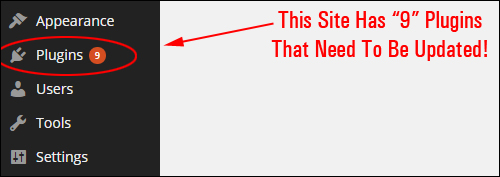
You can also tell how many plugins need updating from your WordPress Admin Toolbar (the example below shows that a number of plugins require updating) …
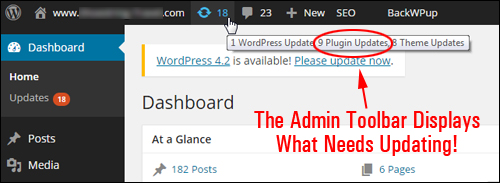
The Plugins section (Plugins > Installed Plugins) also tells you which plugins need updating …
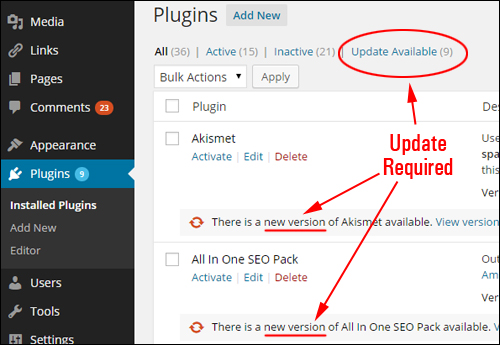
As well as providing information about plugins that have updates available, the Plugins screen provides links to the plugin developer pages and gives you the option to update the plugins instantly …
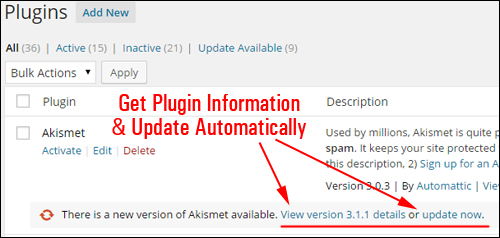
Let’s start by learning how to update plugins one at a time.
How To Update Single A Plugin
![]()
Always make a complete backup of your data and files before upgrading your website or blog.
From your main menu, select Plugins > Installed Plugins …
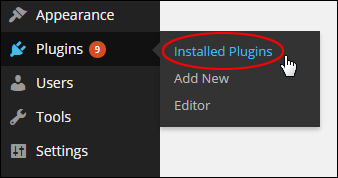
You will be taken to the “Plugins” screen. The table of plugins can flow down your page for a while, depending on how many plugins you have added to your blog …
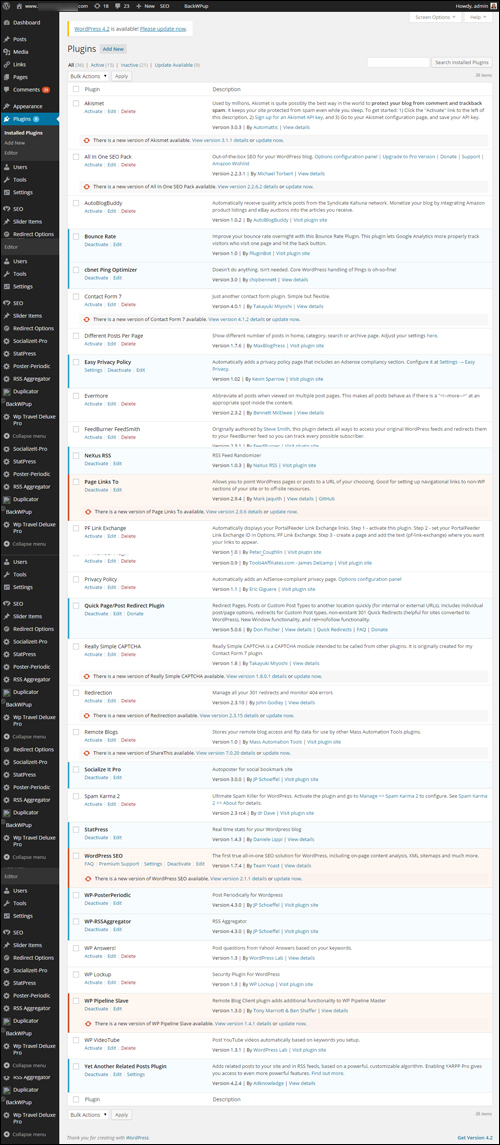
(The WordPress Plugins Page)
![]()
Notes:
If you have too many plugins installed and would like to reduce the number of plugins showing on the screen, then click on the Screen Options tab at the top of your Plugins screen and type in a smaller number of items per page (all plugins show up on the page by default, i.e. “999”), then click Apply …

Your Plugins area will now be reduced in size with a page scrolling feature added. You can find an installed plugin by scrolling through the pages or using the “Search Plugins” function …
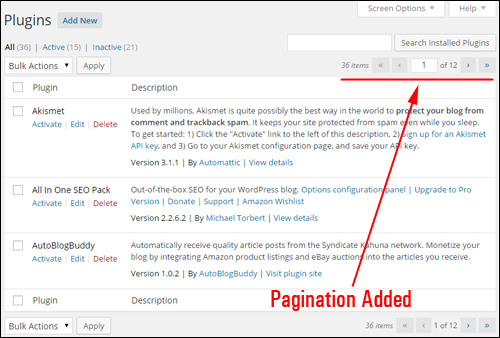
WordPress displays plugin information in different color backgrounds depending on the status of the plugins (inactive vs. active and up-to-date vs. out-of-date) …
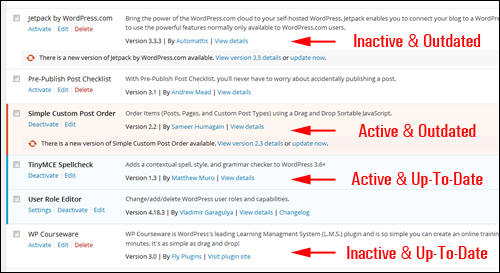
Plugins that require updating have a distinctive notification message: “There is a new version of [Insert Plugin Name] available” …

Select the plugin that you want to update and click on the update now link …

WordPress provides smooth & simpler plugin updates, so that the process of updating your plugins takes place “behind the scenes” without leaving your Plugins area …
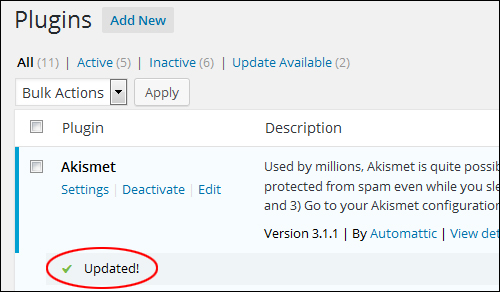
Repeat the above process for all plugins on your site that need updating, or see the section below if you have several plugins that are out-of-date and would like to upgrade all plugins in one simple operation.
***
Now that you know how to upgrade individual plugins, let’s show you how to upgrade multiple WP plugins simultaneously.
How To Bulk-Update Plugins
To upgrade multiple plugins in one go from your admin area, go to the “Plugins” page and click on the Update Available link on the menu at the top of the page …

Tick the checkbox next to the Plugin column header to select all plugins at once, or select each plugin you want to upgrade by checking their individual boxes …
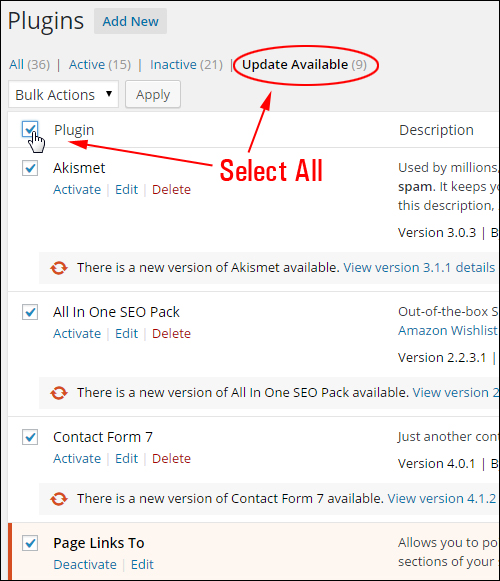
In the Bulk Actions dropdown menu above the list of plugins, select Update …
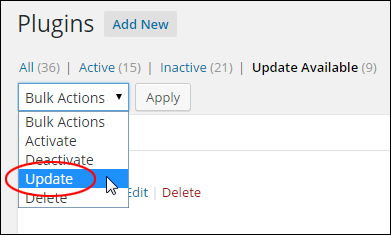
And then click Apply …
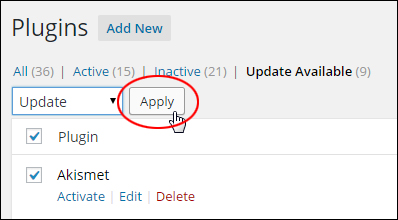
Your selected plugins will begin the update process …
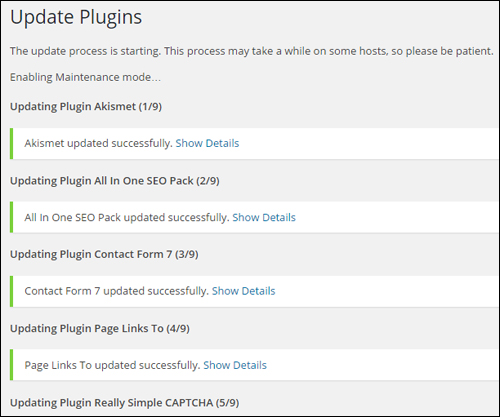
Once the update process has completed, you can click on the Return to Plugins page link to go back to the Plugins section, or select another option from the main menu …
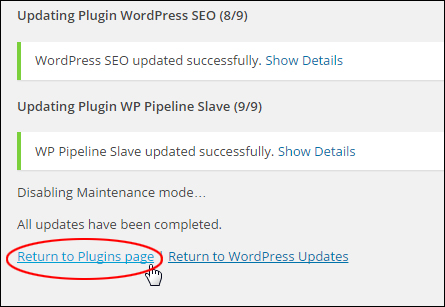
Once all plugins are up-to-date, any plugin alerts disappear (i.e. the “at-a-glance” indicators and “There is a new version of XYZ plugin available” messages no longer display) …
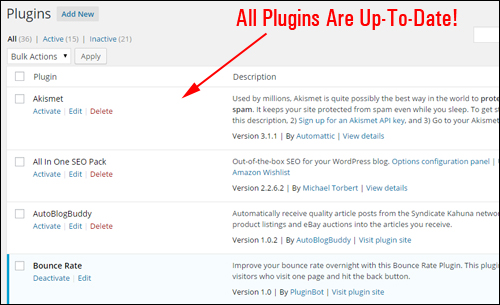
All plugins are now up-to-date!
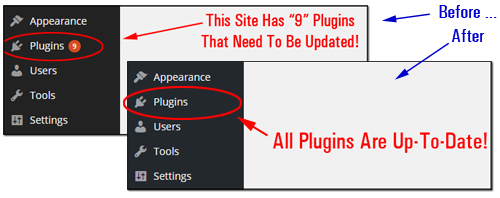
(When your site or blog uses the latest version of all plugins, notification icons disappear)
Now that you know how to update your plugins, it’s time to learn how to uninstall plugins from your blog or website.
Deleting WP Plugins
As part of smart WordPress management practices, it’s a good idea to remove plugins that are no longer needed or being used on your site. This helps to conserve server resources and also help you avoid potential problems.
In this section, you will learn how to safely uninstall unused plugins from your site.
![]()
We strongly recommend creating a full back up of your WordPress site before installing, upgrading or deleting plugins, in case something goes wrong and you need to recover data or reinstall your site.
To remove a plugin, go to your admin menu and select Plugins > Installed Plugins …
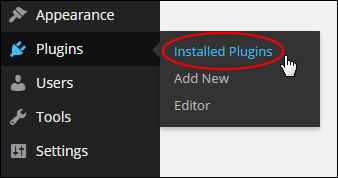
In the Plugins section, find the plugin you want to delete and make sure it is deactivated.
Hint: Inactive plugins are listed in a different colored background than active plugins and show an “Activate” link below the plugin name …
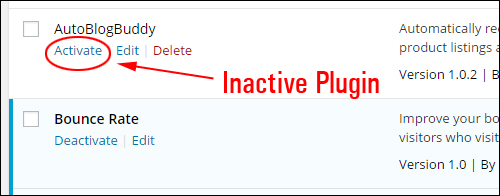
If the plugin is active, then click on Deactivate before continuing with your plugin deletion …

Once you have deactivated the plugin, click Delete …

If you would like to review a list of all the files that will be deleted before going ahead with the next step, then click on the “Click to view entire list of files which will be deleted” link in the “Delete Plugin” section …
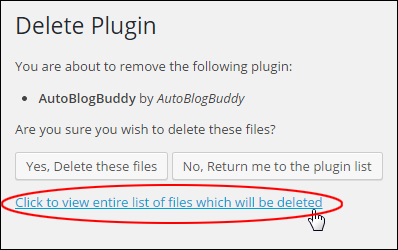
The entire list of files associated with the plugin selected for removalwill display on your screen …
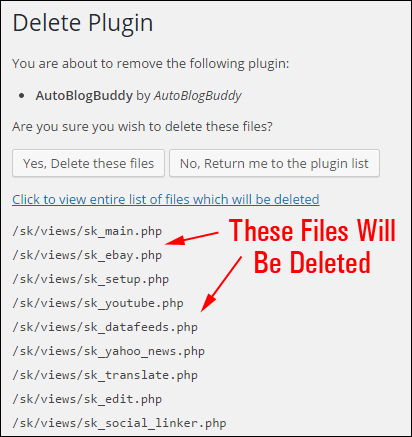
If you are certain that you would like to proceed and delete these plugin files, click on the Yes, Delete these files button …
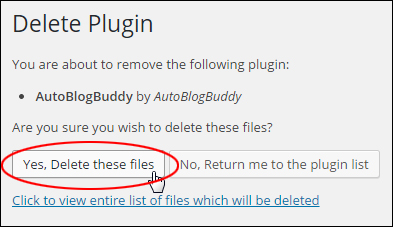
The selected plugins and related files will be removed from your WordPress installation …
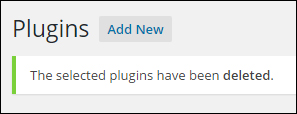
Bulk-Deleting Plugins
You can bulk-delete all inactive plugins on your site, or select a combination of active and inactive plugins to be uninstalled.
![]()
Note: To delete any plugins that are currently active, you first need to deactivate them.
Go to the “Plugins” section and select all of the active plugins that you want to delete by either placing a tick next to their check box, or selecting the check box next to the Plugin column header to select all plugins (warning: this will deactivate all plugins) …
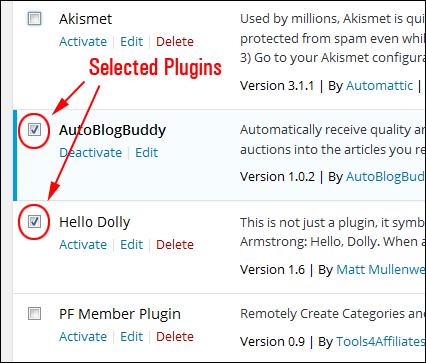
Once you have done this, choose Deactivate from the Bulk Actions dropdown menu …
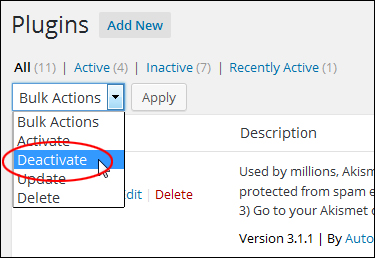
Click Apply …
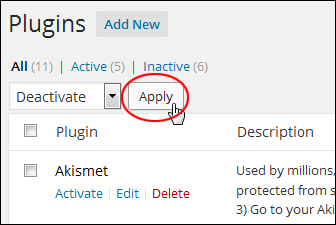
Your selected plugins will be deactivated …
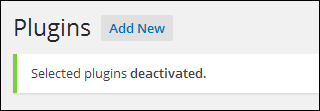
Once you have deactivated these plugins, click on the Inactive link on the menu at the top of the page …
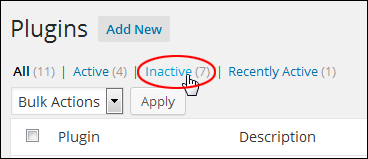
Tick the check box next to the Plugin column header to select all plugins at once, or select only the plugins you want to remove by checking its box …
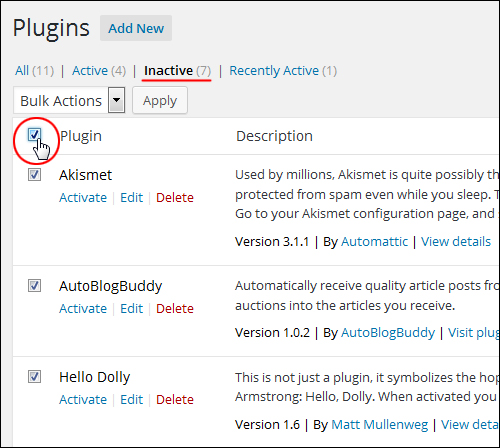
Once you have ticked all the checkboxes next to the plugins that you want to delete, select Delete from the Bulk Actions pull-down menu …
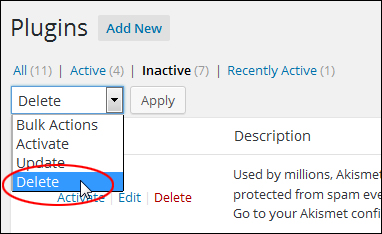
Click Apply …
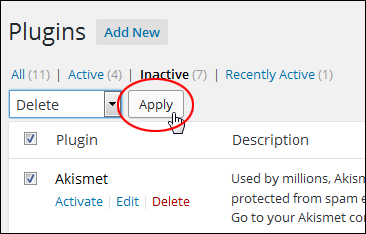
A list of all selected plugins will show up in the Delete Plugins screen. Click on “click to view entire list of files which will be deleted” to review all the plugin files that you are about to delete, or click on the Yes, Delete these files button if you are sure that you want to go ahead and delete all of the plugins listed …
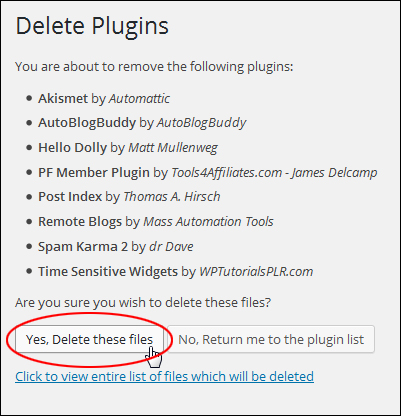
The plugins will be deleted …
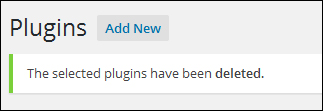
WordPress Tools For Managing WP Plugins
As well as the methods shown above, you can install other WordPress plugins to manage your WordPress plugins.
Health Check & troubleshooting
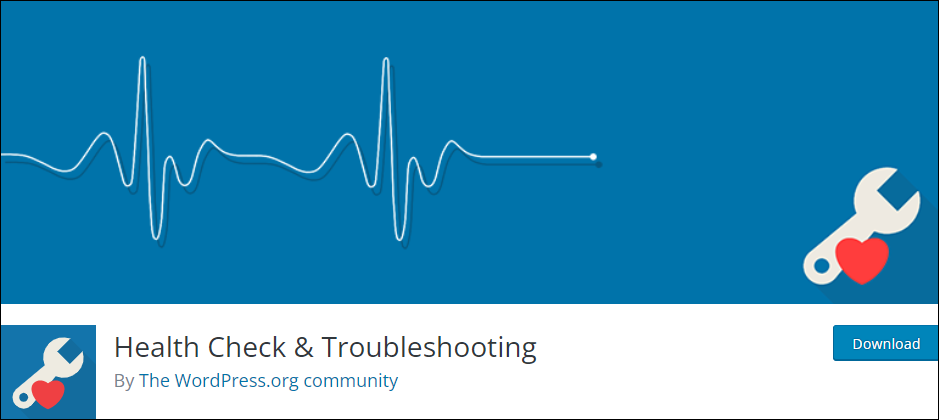
This plugin provides comprehensive checks for your WordPress installation to detect common configuration errors and known issues. It also enables plugins and themes to add their own custom checks.
The debug section allows you to easily gather information about your WordPress and server configuration, which can be shared with support representatives for themes, plugins, or on the official WordPress.org support forums.
The troubleshooting feature allows you to initiate a clean WordPress session, where all plugins are disabled and a default theme is used, but only for your user account until you choose to disable it or log out.
The Tools section offers the ability to check for file tampering in WordPress, test email-sending functionality, and verify plugin compatibility with future PHP version updates.
For more details, go here: Health Check And Troubleshooting
Managing WordPress Plugins On Multiple Sites
As discussed earlier, when plugin updates are released, the best practice is to update the plugin as soon as possible to its latest version.
What if you run multiple WordPress sites using the same plugin?
Typically, you would need to log in to every site individually and update the plugin manually from the site’s admin dashboard.
If you manage or plan to manage multiple sites, this process can become very time-consuming, especially as plugins get updated quite often.
If you manage multiple WordPress sites, you can install, update, and delete multiple plugins on all your sites automatically and simultaneously using WordPress site management tools, like the one below:
WPMU DEV’s The Hub
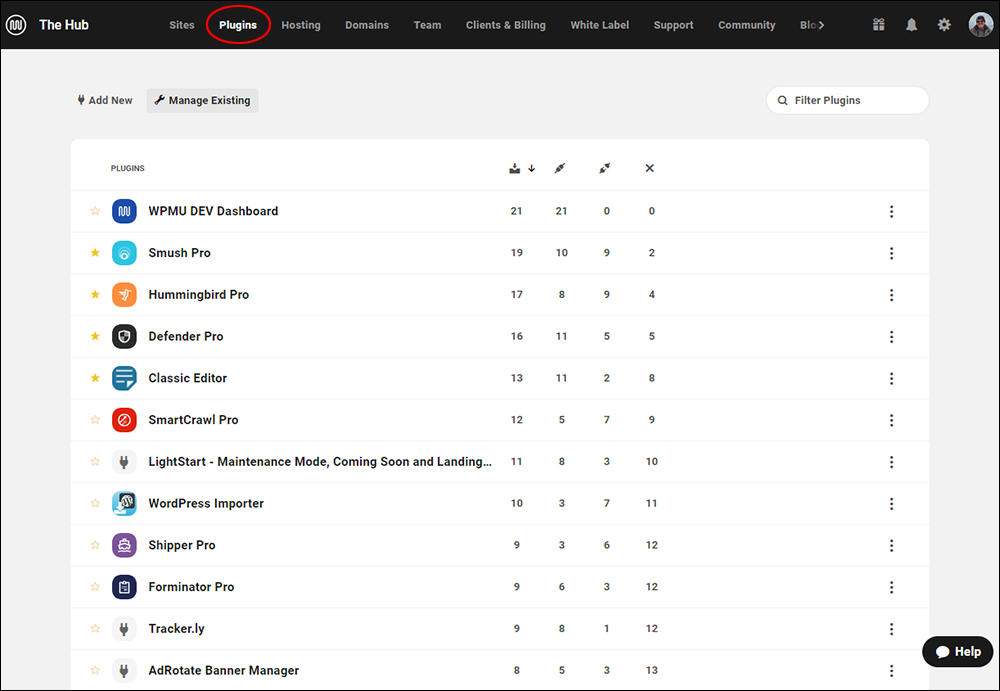
The Hub lets you manage unlimited WordPress sites easily and effectively from one central command center.
The Updates section of The Hub shows you exactly what needs updating on each of your managed site(s), including plugins, themes, and core software updates.

The Hub’s Updates features display how many outdated components need updating on your site(s).
You can choose to either update all your plugins at once or update them individually with just a few clicks. Best of all, you don’t need to log into every site separately to perform your plugin updates.

Update everything at once or perform individual updates directly in The Hub with a few clicks.
This can be a real time-saver when managing multiple WordPress sites, especially when WordPress releases a new version and you have to update many plugins and themes to prevent potential issues from happening.

You can read our comprehensive article on managing multiple sites effectively using the Hub or visit WPMU DEV to learn more and try The Hub for free.
***
"Your training is the best in the world! It is simple, yet detailed, direct, understandable, memorable, and complete." Andrea Adams, FinancialJourney.org

